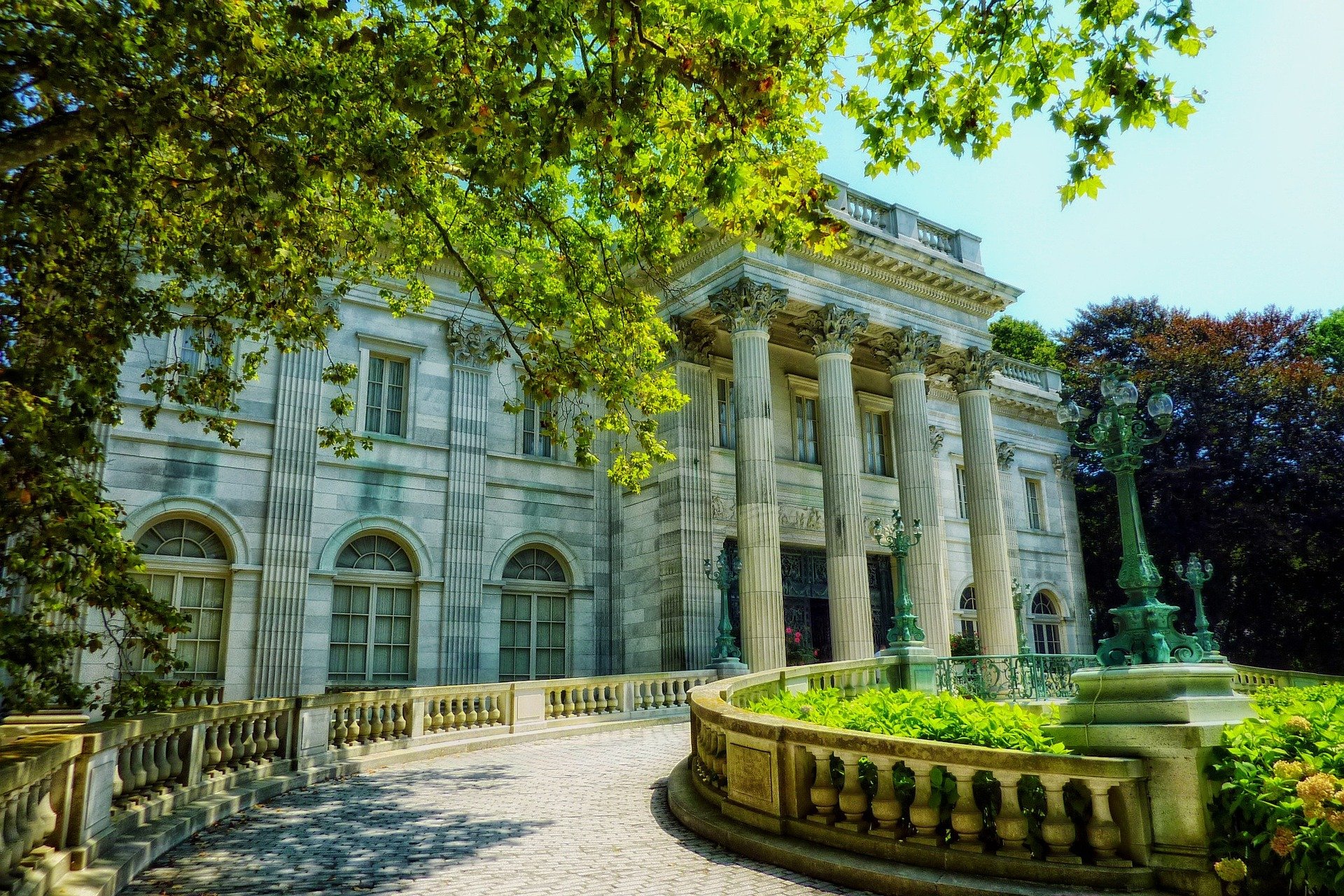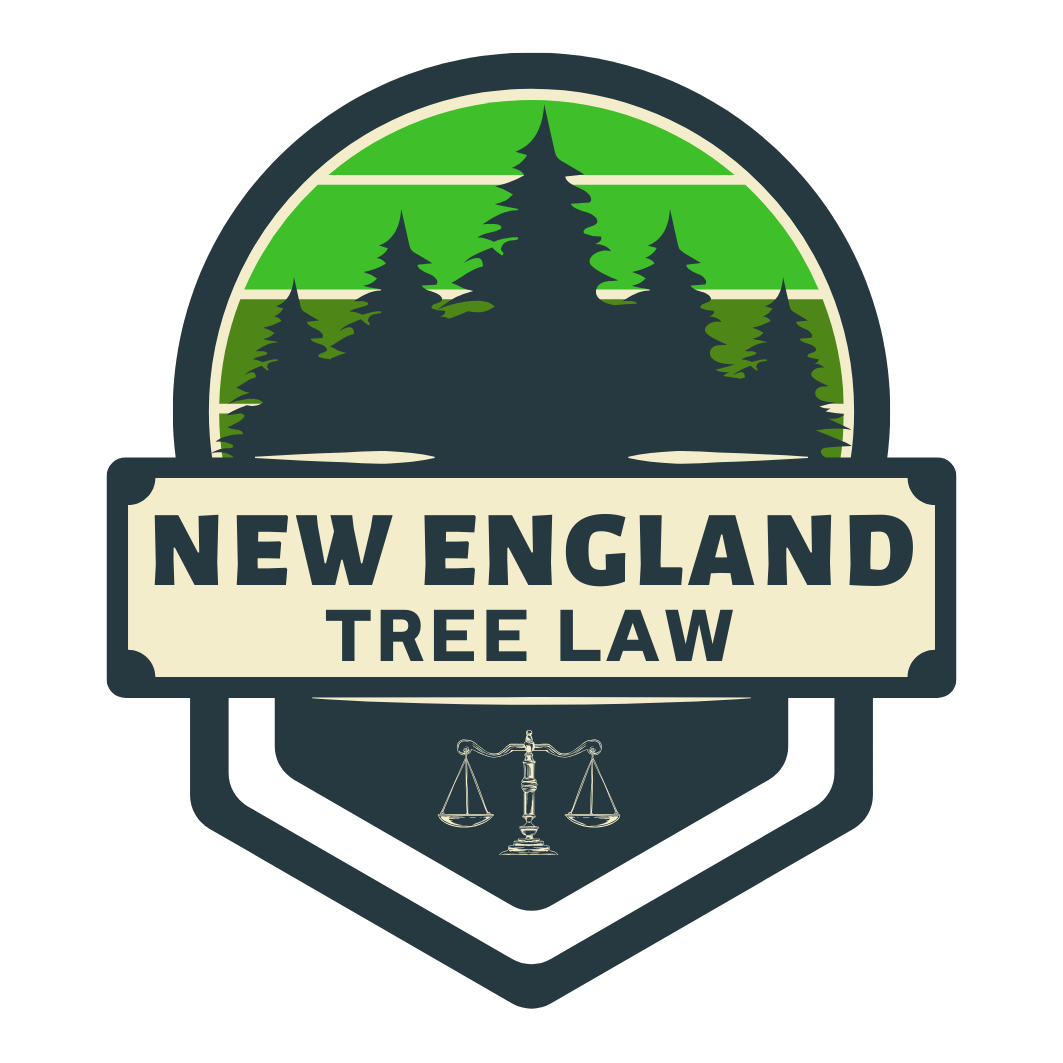
Rhode Island
Rhode Island timber trespass:
The law of unauthorized tree-cutting
__________________________________
Rhode Island may be the smallest state in the country, but it doesn’t lack for trees. The United States Department of Agriculture estimates that Rhode Island is home to at least 165 million live trees. Forests cover approximately 55 percent of the state’s land area. Common trees in Rhode Island include red maples, white pines, and various oaks such as red oaks, white oaks, and black oaks.
Rhode Island is a sought-after place to live due to its proximity to population centers like Boston and New York City, as well as its beautiful coast and hot spots like Newport and Providence. Residential development in the state has exploded over the past few decades.
Suburban house lots, being relatively small in size, can unfortunately cause property disputes between neighbors. Often, those neighbor disputes involve trees.
What does “timber trespass” mean in Rhode Island?
“Timber trespass” is the legal term for the wrongful cutting of trees without permission. The classic example of timber trespass is timber theft, which usually involves a logger intentionally trespassing onto a vacant forested lot and clear cutting trees with the intention of selling those trees for profit.
In residential settings, however, timber trespass most often occurs accidentally. In a typical case, a neighbor is clearing trees from their own backyard and accidentally crosses the property line, cutting their neighbor’s trees. This usually happens because the neighbor has not conducted a property survey before doing tree-cutting and instead relies on their own (mistaken) belief about where the boundary line actually is.
Like most states, Rhode Island has a statutory law which imposes civil penalties for timber trespass. The statute, found at Rhode Island General Laws, Section 34-20-1, provides that:
Every person who shall cut, destroy, or carry away any tree, timber, wood or underwood whatsoever, lying or growing on the land of any other person, without leave of the owner thereof, shall, for every such trespass, pay the party injured twice the value of any tree so cut, destroyed, or carried away; and for the wood or underwood, thrice the value thereof; to be recovered by civil action.
The statute does not require that the defendant have acted intentionally or with malice. It applies even when the trespass occurred by mistake. The statute also applies when the perpetrator is not actually trespassing, but still cuts or damages the property owner’s trees without permission. Hickey v. Town of Burrillville, 713 A.2d 781, 786 (R.I. 1998). This could happen, for example, if you hire a tree service to remove certain trees, and the tree service mistakenly cuts down the wrong trees.
The timber trespass statute makes trespassers liable to the tree owner for twice the value of the trees cut or destroyed plus three times the value of the wood itself. Morabit v. Hoag, 80 A.3d 1, 4 (R.I. 2013). A central question in calculating damages for timber trespass is therefore determining the value of the trees in question.

What is a tree worth?
Rhode Island courts employ a flexible approach in assigning value to trees. There are several different measures of damages, which depend on “the use of the trees and their intrinsic value to the property.” Id. at 16. For example, if trees are primarily intended for logging, the fairest measure of damage is to calculate the fair market value of the trees for timber or lumber. Market value of the tree will, however, will not “make whole” a landowner in many situations. This is especially true in residential settings, where the worth of a tree is not captured by its value as a commodity. Rather, trees in residential settings are usually prized for privacy, aesthetics, shade, and wildlife benefits.
In residential settings, therefore, trees typically have a personal value to the property owner beyond just their market value. In those situations, a tree owner will not be fully compensated by simply receiving monetary compensation for the market value of the tree.
Where the trees that have been cut down are ornamental, privacy, or shade trees on a residential lot, Rhode Island courts allow “restoration costs” as the measure of damages. Id. at 17. Restoration costs are also awarded when a tree is historic or has sentimental value. Id.
Restoration cost of a tree depends greatly on the size and characteristics of the tree in question. Where a tree is smaller, it may be capable of direct replacement. For example, if a 10 foot oak tree is wrongfully cut down, a similar 10 foot oak tree could probably be purchased at a nursery or through a landscaper and installed on the property. If the felled tree is very large, direct replacement may not be feasible. Purchasing, transporting, and installing a 40 or 50 foot pine tree is not practicable.
Arborists have developed appraisal methods to put a value on large trees. One such method is the “trunk formula technique.” The trunk formula technique extrapolates the replacement and restoration cost of a tree using the cost of a smaller tree that is actually available for purchase. Once the basic tree cost is calculated using the formula, adjustments are made to account for the species, location, and condition of the tree. For example, an oak tree with the same dimensions as a pine will have a higher value because of the higher cost of oak trees. Similarly, a tree located near a boundary line between houses will have a higher value than a tree in the middle of a densely wooded lot. Large trees in good condition may be worth tens of thousands of dollars.
Only certain arborists are trained in tree appraisal. An attorney with experience in timber trespass cases should be able to give you a ballpark estimate of a tree’s replacement value and hire an arborist on your behalf for a timber trespass lawsuit.
Insurance coverage for timber trespass
Most homeowners and businesses have liability insurance. For residential property owners, personal liability insurance is a component of their homeowners insurance coverage. Businesses are typically covered by a general commercial liability policy.
In either case, the liability insurance serves to protect and indemnify the policy holder when they are accused of causing injury to someone else’s body or property. Much like automobile insurance, a claim can be made “pre-lawsuit” by the injured party. Although the insurance company does not have to settle a claim, they often do in order to avoid having to defend litigation.
In the context of timber trespass, the owner of the wrongfully-cut trees is often able to avail themselves of liability insurance coverage. For example, if a neighbor (or the neighbor’s contractor, like a tree service) cuts down your trees, the neighbor’s homeowners insurance company should cover your claim and pay you compensation. Atain Specialty Ins. Co. v. Old River Rd. Dev., LLC, 2023 U.S. Dist. LEXIS 171356, at *8-9 (D.R.I. Sep. 22, 2023).
Conclusion
The process of advancing a timber trespass claim may not be straightforward. Insurance companies do not often handle timber trespass claims and generally do not understand the extent of legal exposure their insureds may have in a lawsuit. They often undervalue trees, or may not even understand that timber trespass claims are covered by liability insurance at all. It is therefore important to consult with an experienced timber trespass lawyer before proceeding with a claim.
If your trees were cut down without authorization, you could be entitled to significant compensation. Contact an experienced timber trespass attorney to evaluate your case.
